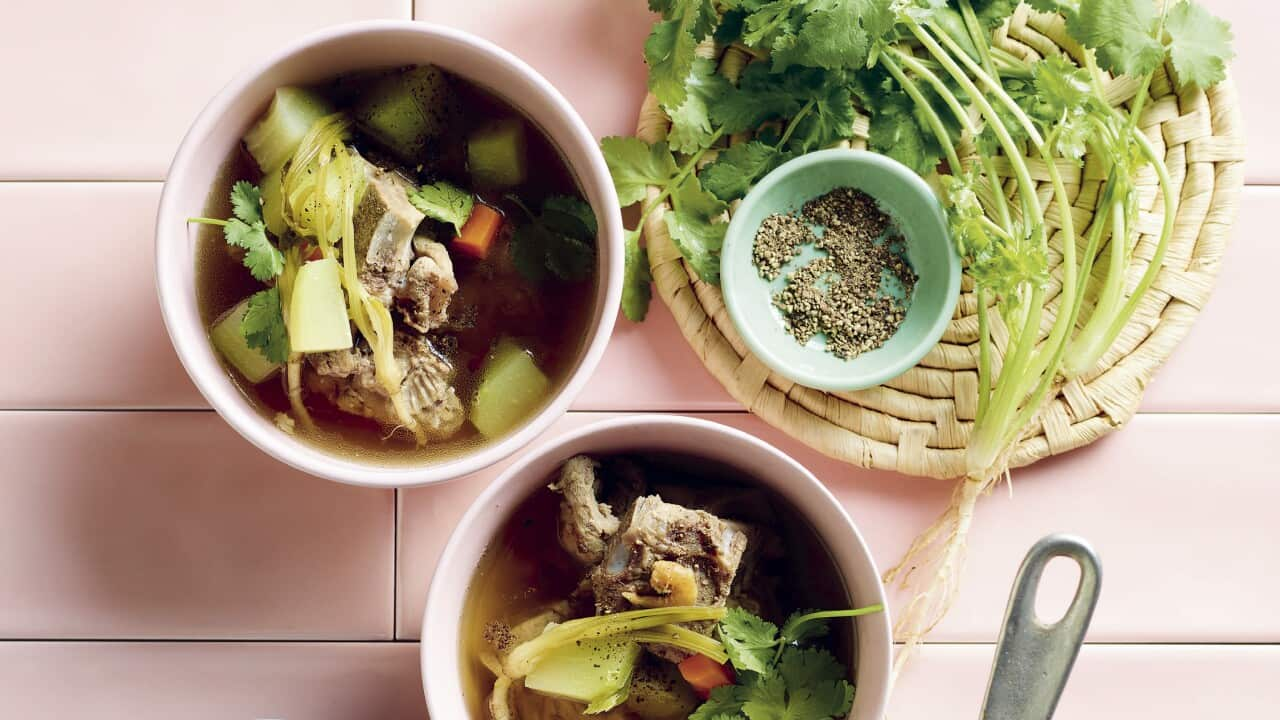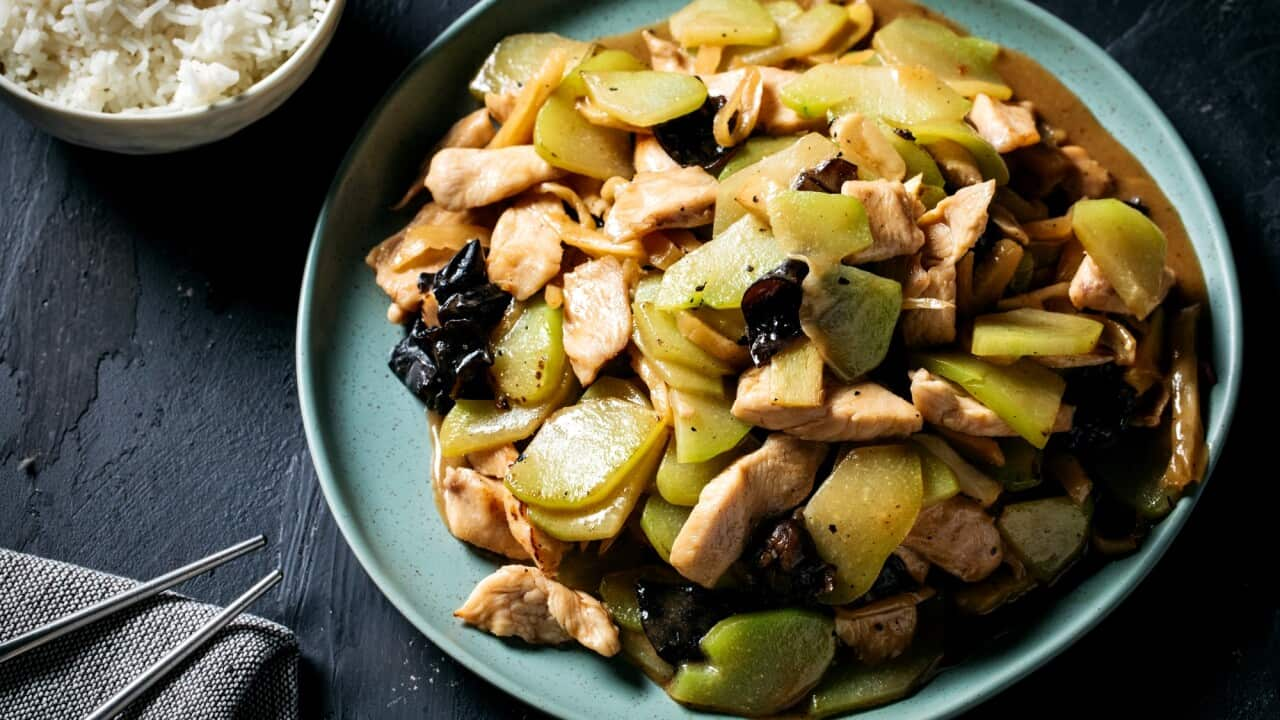The humble choko is often seen as nothing more than a creeping wild vine across Australian backyards, sheds and neighbourhoods, but this fruit has a long and travelled history.
Originating in Mexico, where it was a staple food for the Aztecs and other indigenous societies, the choko travelled from Central America to Europe during the Columbian exchange in the 16th century. From there, it traversed Asia and, finally, came to Australia.
While its more common name is ’chayote’, with Spanish roots, Australians were first introduced to this fruit by Chinese immigrants who most likely brought it over during the Gold Rush.

Book by Thanh Truong. Credit: Plum
While it’s better known in Chinese cuisine as a staple vegetable with various cooking methods, the history of its culinary use in Australia is far different.
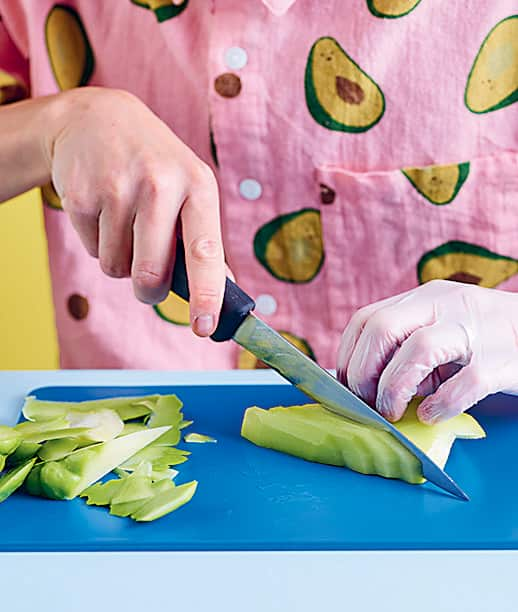
Chokos are a versatile vegetable. Credit: Mark Roper
Variety is the spice of life and the culinary world of chokos is vast.
How to cook chokos
Many Aussies have shared with me on social media that the most common way they prepare choko is to boil it or bake it with butter, salt and pepper. Whenever I bake choko, it gives me potato-crossed-with-broccoli feels, but there are so many other ways to prepare it. Variety is the spice of life and the culinary world of chokos is vast, from choko gratin and choko in curry, to pickled choko and cheese-stuffed choko served in a soup – the possibilities are endless. Trust me, give this underappreciated vegetable a chance and you’ll be pleasantly surprised.
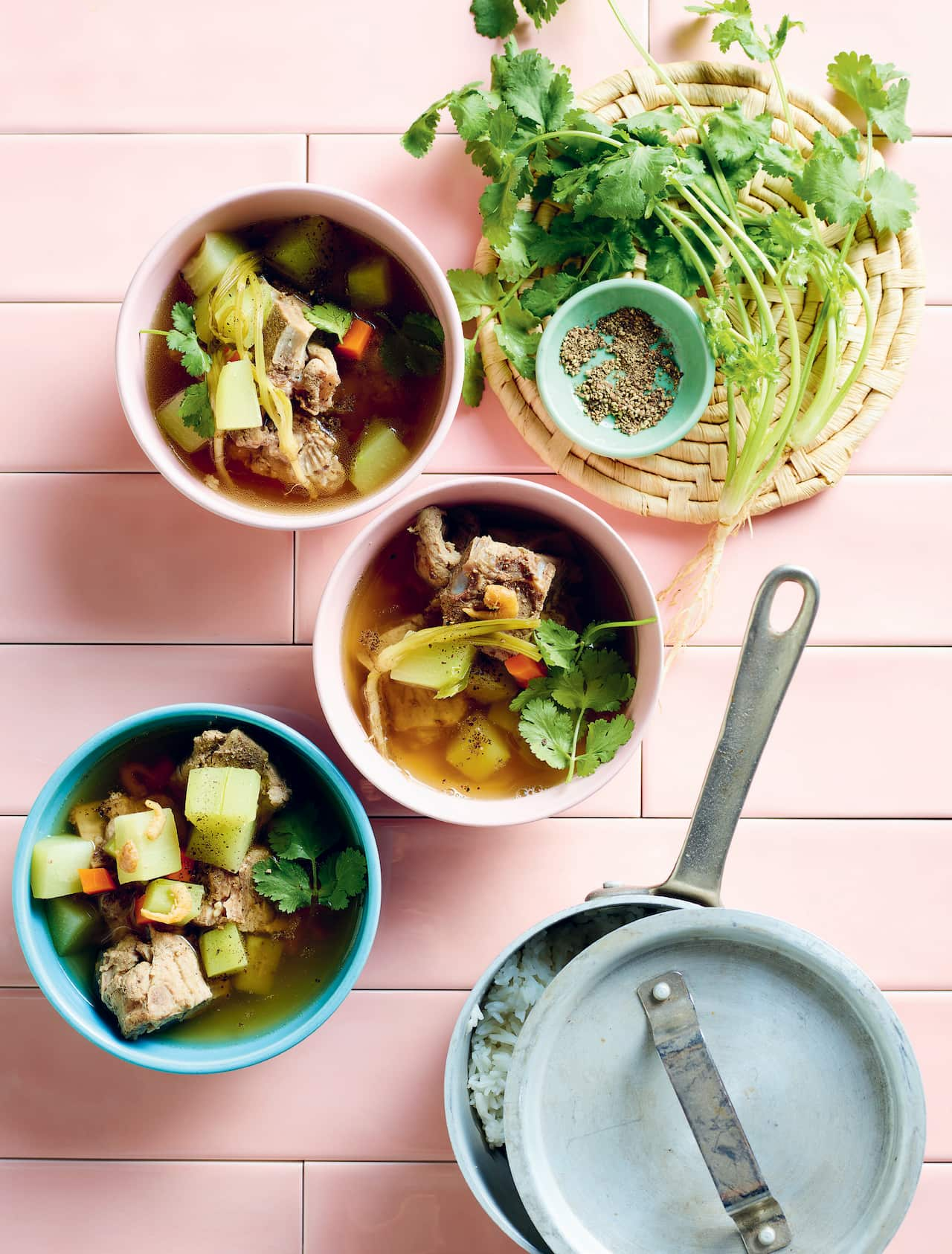
Duncan Lu shares his Vietnamese choko soup recipe. Credit: Mark Roper
While wild-vine chokos are often very spiky, the commercial cultivars you see at the shops are selected because they don’t have spikes. They have smooth skin and are much easier to harvest, handle and peel.
Generally speaking, as the fruit ripens, it will expand and look plumper. My fruiterer cousin, Raymond Chau, says most customers will pick the plump chokos because they are easier to peel, although it means the seed will be bigger. Darker-skinned fruit is also a sign of maturity.
Give this underappreciated vegetable a chance and you’ll be pleasantly surprised.
In Australia, as in Asia, chokos are grown to full maturity and then they are cooked or preserved; however, in South America, they pick the fruit when it is very young and eaten raw. These tender baby chokos have not developed thick sap in the skin and are crispy and fluffy, instead of dense and with a seed. The tendrils, young leaves and shoots of the choko plant are also edible. They have slight bitter notes and can be used in stir-fries, soups and even dumplings. Although not widely available, you can find them in speciality Asian fruit shops in summertime.
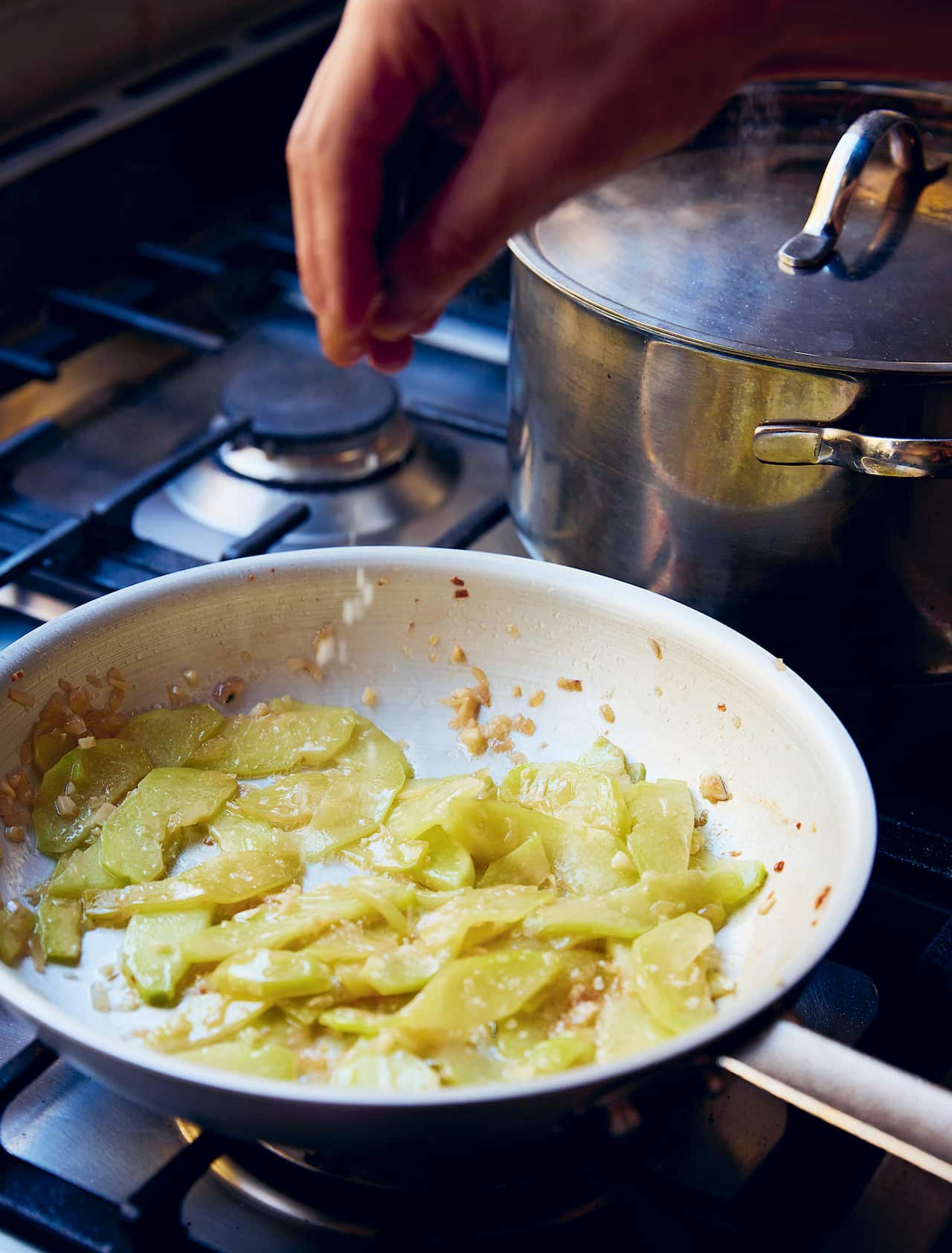
Choko goes well in a stir-fry. Credit: Mark Roper
- Look for chokos that are firm, heavy and plump, with few grooves or channels.
- Darker-coloured chokos suggest maturity.
- Avoid chokos that show signs of shrinking or the seed bulging at the base.
Young chokos
- Look for chokos that are small and light in colour.
- They should be skinny in shape and have a thin skin.
Store
- Store chokos in a plastic bag or airtight container in the crisper drawer of your fridge – the cool and constant temperature will help slow the maturity of the fruit, while the plastic bag or container will keep the humidity high and prevent moisture loss.
Prep
- Wear kitchen gloves to prevent the sap from irritating your skin.
- Cut the choko in half and remove the seed by slicing at a 45-degree angle either side of the seed.
- Peel and bake whole or slice and add to stir-fried dishes.
This is an extract from Don’t Buy Fruit & Veg Without Me!, published by Plum, RRP $39.99, photography by Mark Roper.



